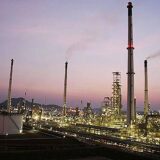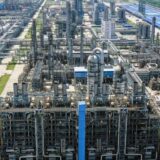
GS Caltex first to process “carbon-neutral” crude oil in Korea
GS Caltex announced on June 17 that it will import 2 million barrels of “carbon-neutral” crude oil produced from the Johan Sverdrup offshore oil field in Norway by Lundin Energy, a Swedish energy company that obtained the world’s first carbon-neutral crude oil certification.
GS Caltex’s maximum daily crude oil processing capacity is 800,000 barrels. The 2 million barrels of Norwegian carbon-neutral crude oil is equivalent to a three-day throughput for the Korean refiner. It is nonetheless significant in that it is the first Korean energy company to introduce carbon-neutral crude oil in the domestic market.
The carbon-neutral crude oil will be shipped from Norway in July and will arrive in South Korea in September.
Lundin Energy has established itself as one of the largest oil companies in Europe after discovering an oil field near Norway. The Johann Svedrup oil field is an offshore oil field 140 km west of Stavanger, Norway, with a total reserve of 2.7 billion barrels and about 500,000 barrels per day of crude oil production.
On June 16, Lundin obtained CarbonClear certification from Intertek, a global testing and certification organization, by emitting 0.45 kg of CO2e/boe (tons of carbon dioxide equivalent/barrel of oil equivalent), 40 times lower than the average carbon emission of general oil fields, from crude oil produced in the Johan Sverdrup oil field.
Based on carbon capture technology such as planting, it was certified by the Verified Carbon Standard (VCS), an international certification standard for carbon reduction and received certification that its crude oil production is carbon zero.
“In line with the company’s efforts to expand its eco-friendly management activities, we have preemptively introduced carbon-neutral crude oil from Lundin, which received the world’s first carbon-neutral crude oil certification, into Korea. We will strive to build a sustainable business ecosystem through leadership,” said Se-hong Huh, president of GS Caltex.
Meanwhile, GS Caltex last year replaced low sulfur fuel oil, which was used to operate its Yeosu refinery, with liquefied natural gas (LNG). LNG emits less carbon dioxide than low sulfur fuel oil, with the same calorific value. Fuel oil emits about 76 tonnes of carbon dioxide per terajoule (TJ), while natural gas accounts for only 56 tonnes or 74%.














